What makes this market unique is not the buying and selling for profit, but the interaction and exchange between sellers and buyers, where cultural values take precedence over economic gains.
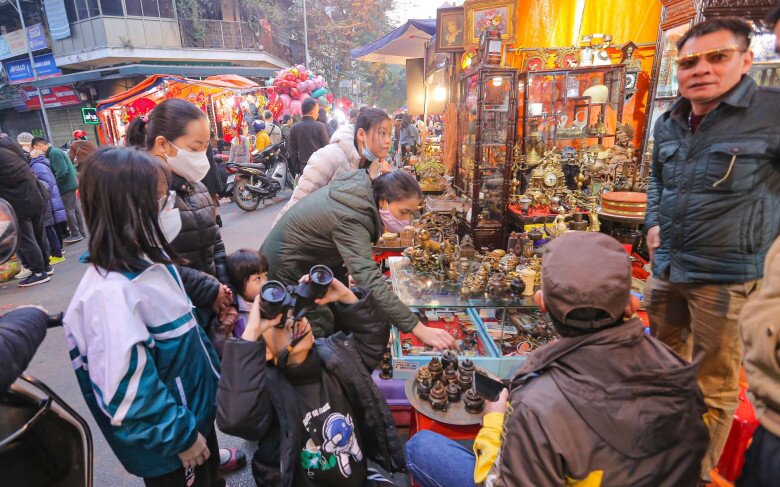
This antique market has become a unique cultural feature of the Spring, rarely found elsewhere. It is considered a familiar destination for antique lovers and enthusiasts in Hanoi every Tet holiday.
According to the elders in the ancient town, this market appeared during the French colonial period and only takes place once a year. It is often likened to a miniature “Cho Vieng” in the heart of Hanoi.
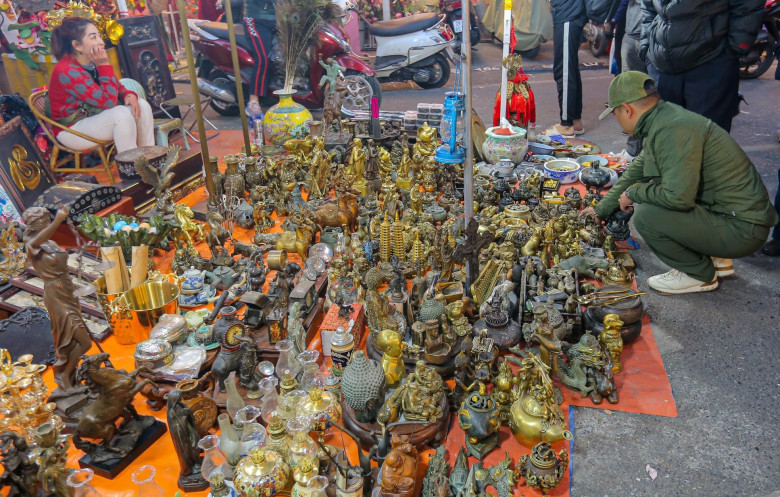
Although called an antique market, it was initially just a gathering place for antique enthusiasts in Hanoi, with a small number of people from neighboring provinces such as Hai Duong, Hung Yen, Nam Dinh, and old Ha Tay. At the same time, it is also a place where people facing economic difficulties can sell old and antique items from their families to make some money for the Tet holiday.
Gradually, the number of participants increased, from one seller to ten, and from one item to hundreds. Nowadays, the market offers a wide range of antiques and vintage items such as calligraphy paintings, horizontal lacquered boards, bowls, plates, pots, and jars made of ceramics, wood, silver, copper, and stone.
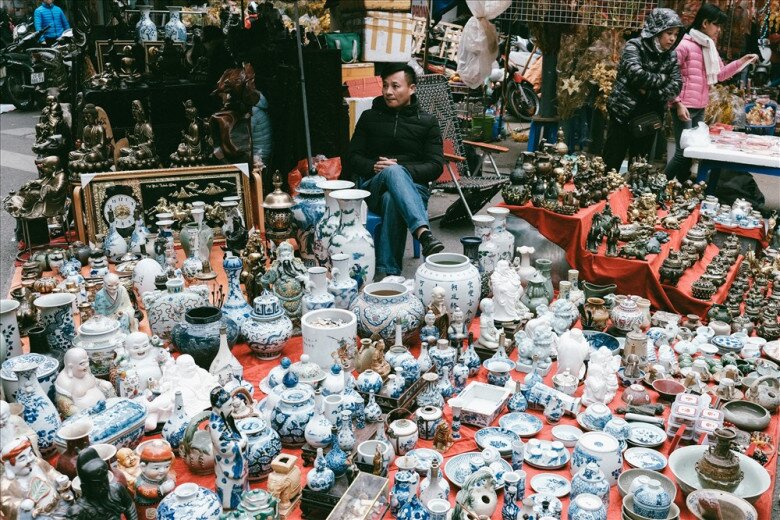
Goods are displayed in abundance on the sidewalks, with various designs, functions, and prices. Some items are priced at just a few dozen thousand dong, while others are valued at several million dong or even tens of millions if they are rare and precious.
What makes this market special is the passion for antiques among its participants. Profit is not the primary goal, as the market serves as a gathering place for people with shared interests to connect and share their joy and enthusiasm.
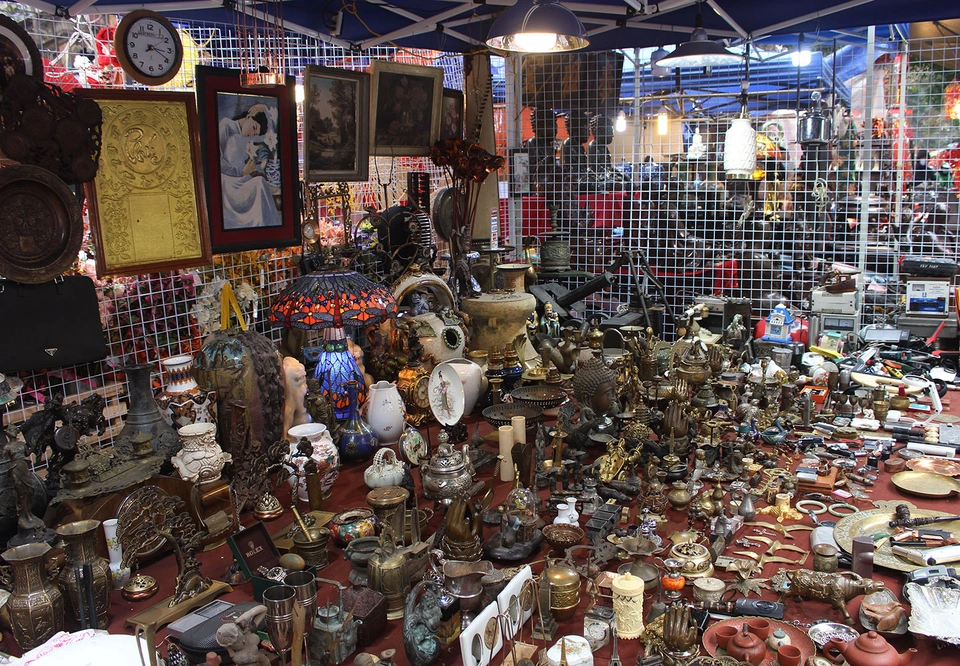
Sellers do not focus solely on making a profit, while buyers choose items that catch their eye or match their taste, without concerning themselves too much with the age or historical value of the piece.
Some people spend the entire year meticulously cleaning and preserving a family heirloom in a glass cabinet, only to bring it out and display it on a dusty sidewalk during the market, for their friends to admire. Others travel long distances and hire cars to transport their items to the market, not with the intention of selling but to meet fellow enthusiasts. Sometimes, they encounter kindred spirits and are willing to exchange or sell their items at a low price as a token of friendship and a memento of the encounter.
Even those who are not antique collectors visit the market to indulge in a unique Tet hobby and sometimes end up purchasing a cherished item to decorate their homes for the Spring festival.
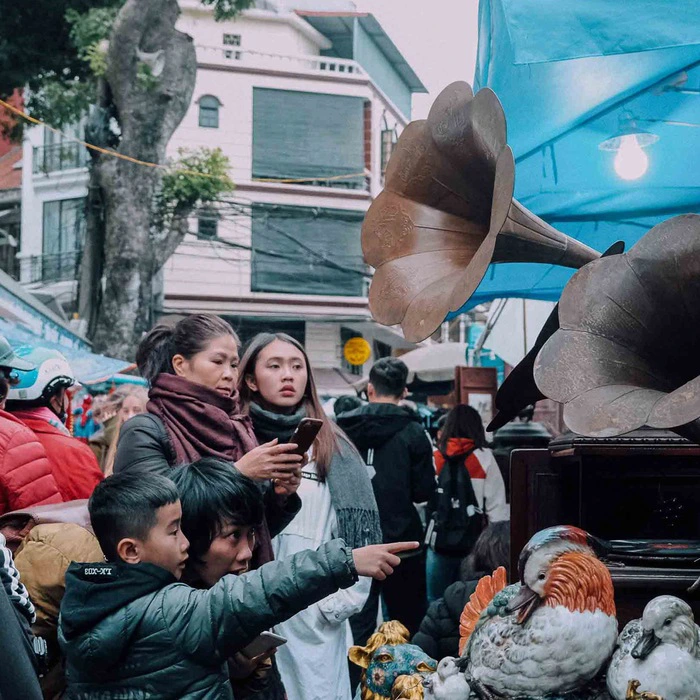
Over time, the antique market has evolved from a mere gathering place to a business opportunity for antique traders. However, the market’s distinctive feature—as a meeting place for antique enthusiasts—has been preserved and promoted.
Every year, without fail, those who have participated in this market in the past look forward to returning. Despite the busy Tet holiday, antique lovers and market traders alike make time to reunite and share their joy.
This unique Spring cultural tradition is worth cherishing and preserving for future generations in Hanoi, a city with a thousand years of cultural heritage.






























